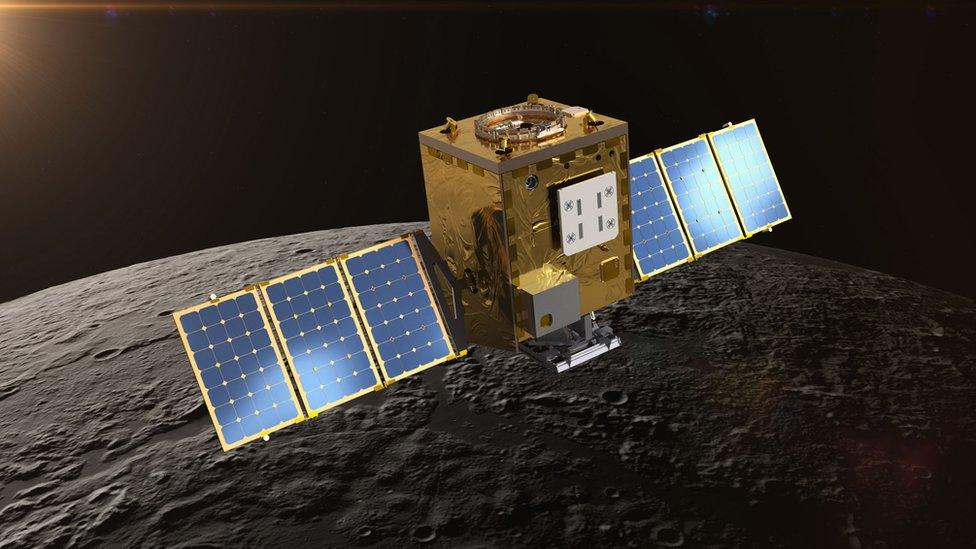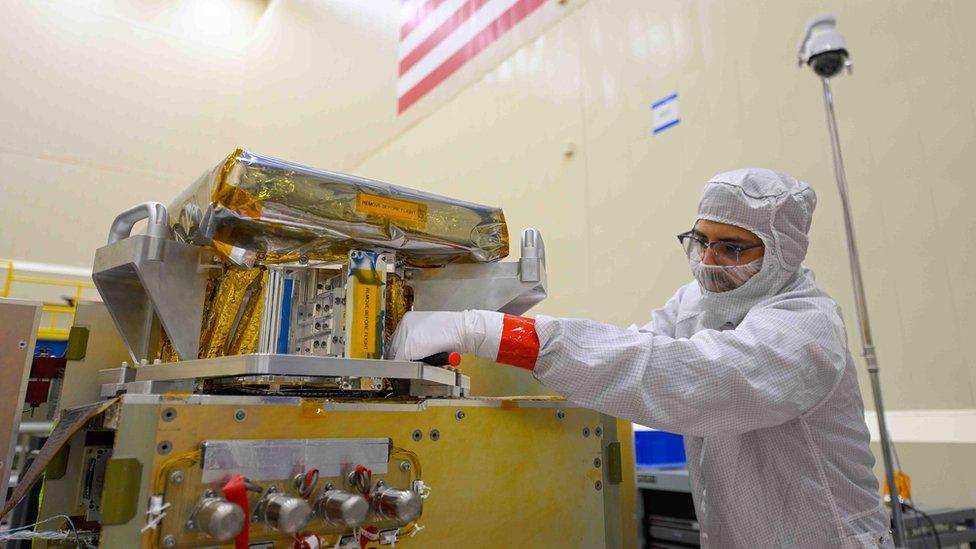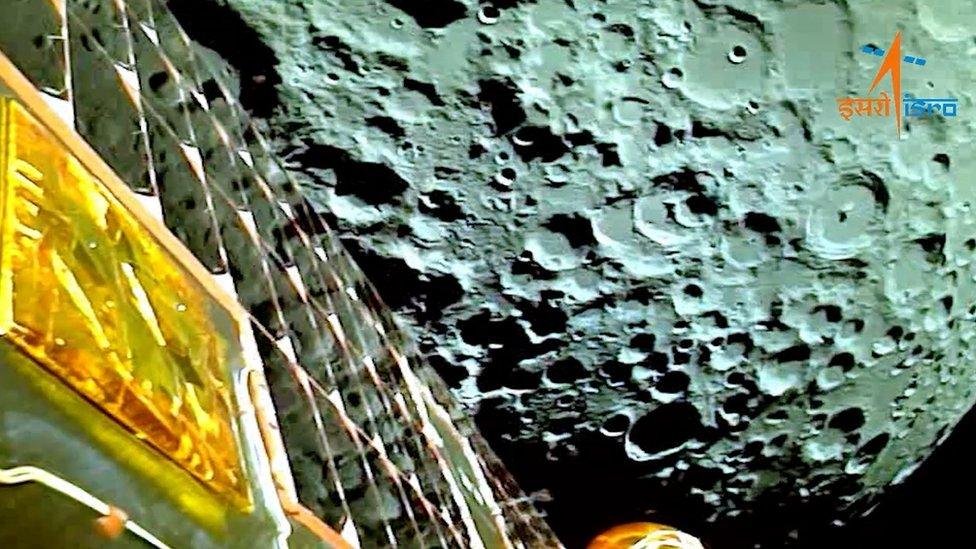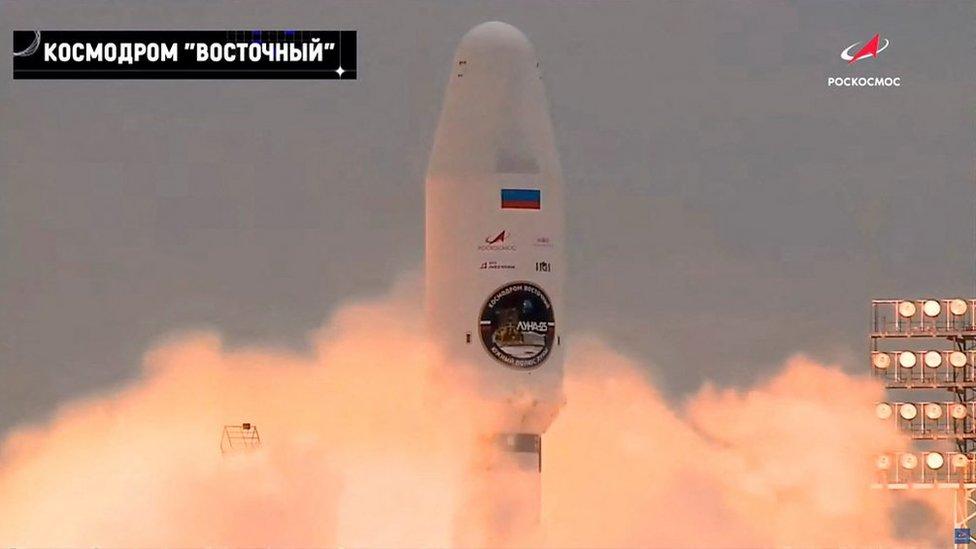Oxford University scientists' camera to detect water on Moon
- Published

The results would provide valuable information for robotic and human explorers in the future
A state-of-the-art camera, which will help find water on the Moon, is set to embark on its first mission.
The Lunar Thermal Mapper, built by scientists at the University of Oxford, will help pinpoint the location and quantity of the Moon's water.
The thermal imaging kit was installed on NASA's Lunar Trailblazer spacecraft, a small satellite which will launch in 2024.
It is hoped the technology will inform future missions.

The Lunar Thermal Mapper (LTM) is a black rectangle attached to the upper right of the spacecraft’s body
By measuring the same locations of the Moon at different times of day, Lunar Trailblazer will be able to detect if the amount of water changes.
It will track whether water is transformed into a gas as the surface heats up, or accumulates like frost in the shadowed regions as the surface cools down.
Scientists from the university's Department of Physics believe the water could be used in a variety of ways, from purifying it as drinking water to processing it for fuel and breathable oxygen.

The kit was fixed on the Lunar Trailblazer spacecraft at Lockheed Martin Space in Colorado, USA
The cutting-edge equipment will work in combination with a high-resolution Volatiles and Minerals Moon Mapper.
Both pieces of kit were installed on the satellite, which measures 3.5m (11.5ft) wide with its solar panels fully deployed.
Prof Neil Bowles, instrument scientist at the University of Oxford's Department of Physics, called the equipment "innovative".
"The data from the mission will help us to understand how water is transported across the surface and potentially captured in cold traps near the lunar poles," he added.

The thermal imaging kit will collect information about what the lunar surface is made of and where water may potentially be found
Libby Jackson, the UK Space Agency's head of space exploration, hoped the mission would bring scientists a step closer in harnessing the Moon's natural resources, which could support future expeditions.
She said: "It's exciting to see the instrument finally ready and fitted for take-off after years of hard work by the team at Oxford."

Follow BBC South on Facebook, external, Twitter, external, or Instagram, external. Send your story ideas to south.newsonline@bbc.co.uk, external.
Related topics
- Published18 August 2023

- Published10 August 2023

- Published11 August 2023
